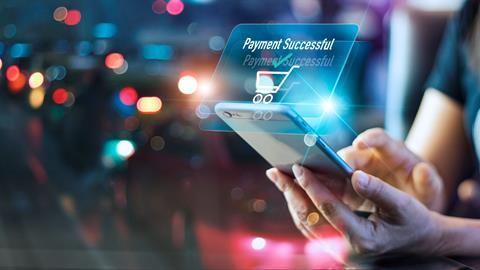The movement of money is the life-source of commerce, says Elavon Europe’s Rob Evans, who explains the pan-European changes that have made the way we pay safer, quicker and easier
In the digital age and in preparation for the potential of the metaverse, the payments landscape is undergoing transformation faster than ever.
But even as the pandemic accelerated the need to adapt to a contactless and cashless approach, Europe’s payments industry was already undergoing its biggest change in over a decade.
The catchily named Second Payments Services Directive, or PSD2 for short, came from the European Commission to make modern, cross-border payments easier, faster and safer for everyone.
Payment successful
At the core of the directive is Strong Customer Authentication, also known as SCA. It came into effect for every business in the UK in March and is a change you will have noticed as a consumer.
If buying anything through, say, your smartphone, you are now put through additional verification to confirm that you are, in fact, you.

Consumers need to satisfy two of three elements to pass Strong Customer Authentication: something only you, the genuine user, could ‘know’ (a password or PIN), something only the genuine user ‘has’ (a possession such as a smartphone) or something the user ‘is’ (a fingerprint or facial recognition).
Growing confidence in ecommerce
We are all customers as well and interact on the web. I think PSD2 has given reassurance and confidence in the market.
People are more conscious now about their information, their data, who is storing it, how it is being stored and whether card details are being handled securely.
PSD2 has been successful in making sure that is now taking place, and it is going to be ever-more important as we move further into ecommerce and the digital space.
The directive aimed to make payments faster, easier and safer for everyone – including your business. But that does not mean the changes were easy or fast. The phased rollout took four years.
The additional steps have improved security but they have also increased levels of cart abandonment. This is where online customers drop out of a purchase at or before the checkout stage.
Cart abandonment can often be down to ‘friction’ in the buying process, where every additional step or process you put a customer through creates an opportunity for them to bail out of the purchase.
Here are five ways to reduce cart abandonment:
-
Accept the payment types your customers want and make it clear that you do. Shoppers are more likely to abandon their carts when their preferred payment method is not available. Make it obvious through your website which ones your customers can use – do not leave it until the checkout stage.
-
Do not force customers to create an account. Offering guest checkout speeds up the process and makes it easier for customers to complete the purchase. Be honest, you know as a customer yourself that you do not really like having to create new passwords or remember yet another one for an outlet you are not yet loyal to. Nor do your customers.
-
Make sure your website is optimised to work on smartphones. Allow your customers to use social media sign-ins, address search to work with partial address entry, and offer payment options linked to digital wallets.
-
Streamline your payments page. Display local currency for cross-border shoppers. Set the length of the card number based on the card type and confirm the validity of the card number before progressing, to help catch typos.
-
Invest in transaction risk analysis (TRA), where appropriate. TRA allows retailers with a high volume of low-risk online transactions to apply exemptions to SCA to help remove friction. Exemptions can be for transactions up to a value of €500, or equivalent, depending on whoever is providing the service.
Rob Evans is head of EFS change at Elavon
































